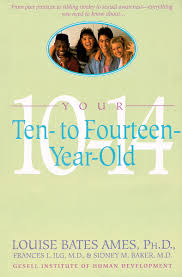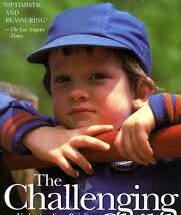
Your Ten- to Fourteen-Year-Old by Louise Bates Ames: A Comprehensive Guide
Introduction
Understanding the developmental stages of children aged ten to fourteen is crucial for parents, educators, and caregivers. In her book Your Ten- to Fourteen-Year-Old, Louise Bates Ames provides valuable insights into the physical, emotional, and psychological changes that occur during these formative years. This article will explore the key themes of the book, providing a comprehensive overview and practical advice.
Overview of Developmental Stages
The period between ten and fourteen years is marked by significant growth and change. According to Ames, this age range can be divided into two main stages: pre-adolescence (10-12 years) and early adolescence (12-14 years).
Pre-Adolescence (10-12 years)
Children in this stage experience steady physical growth and begin to develop more complex thinking abilities. They become more independent and start to form stronger peer relationships.
Key Characteristics
- Growth spurts
- Increased cognitive abilities
- Greater independence
Early Adolescence (12-14 years)
This stage is characterized by rapid physical changes due to puberty, alongside significant emotional and social development. Early adolescents often face challenges related to self-identity and peer pressure.
Key Characteristics
- Puberty
- Emotional volatility
- Search for identity
Physical Development
Physical changes are one of the most noticeable aspects of development in ten- to fourteen-year-olds. These changes can be both exciting and challenging for children and their parents.
Growth and Puberty
During pre-adolescence, children experience steady growth. However, the onset of puberty brings about rapid and often unpredictable physical changes. Understanding these changes can help parents provide the necessary support.
| Age Range | Physical Development |
|---|---|
| 10-12 years | Steady growth, beginning of puberty in some children |
| 12-14 years | Rapid physical changes due to puberty |
Emotional Development
Emotional development is a crucial aspect of the ten- to fourteen-year-old age range. Children become more aware of their own feelings and those of others.
Building Self-Esteem
Developing a positive self-image is essential during these years. Parents can help by providing support and encouragement.
Social Development
Social interactions and relationships become increasingly important. Friendships and peer relationships play a significant role in a child's development.
Peer Influence
The influence of peers can be strong during early adolescence. Children may feel pressure to conform to their peer group's norms and behaviors.
Intellectual Development
Intellectual abilities expand rapidly during these years. Children begin to think more abstractly and critically.
Cognitive Growth
Cognitive development includes improvements in problem-solving, critical thinking, and decision-making skills.
Conclusion
Understanding the various developmental stages and characteristics of ten- to fourteen-year-olds can help parents, educators, and caregivers provide the support and guidance necessary for children to thrive. Louise Bates Ames' book, Your Ten- to Fourteen-Year-Old, offers valuable insights and practical advice for navigating these formative years.
For more insights and resources, visit our website at https://readreviewtalk.com/ and check out our blog at https://readreviewtalk.com/blog/.



